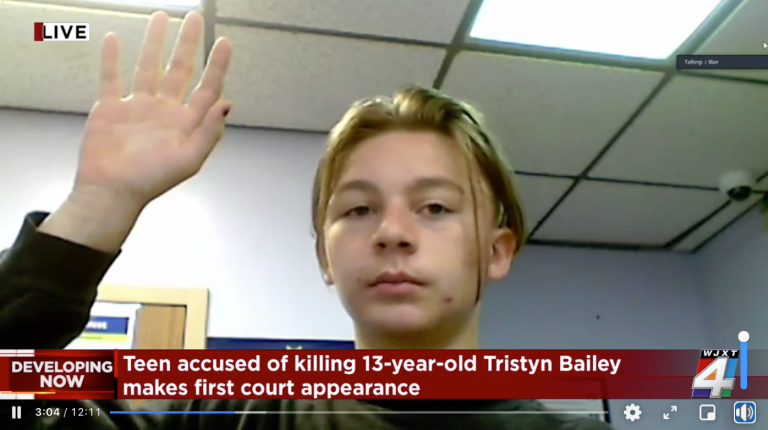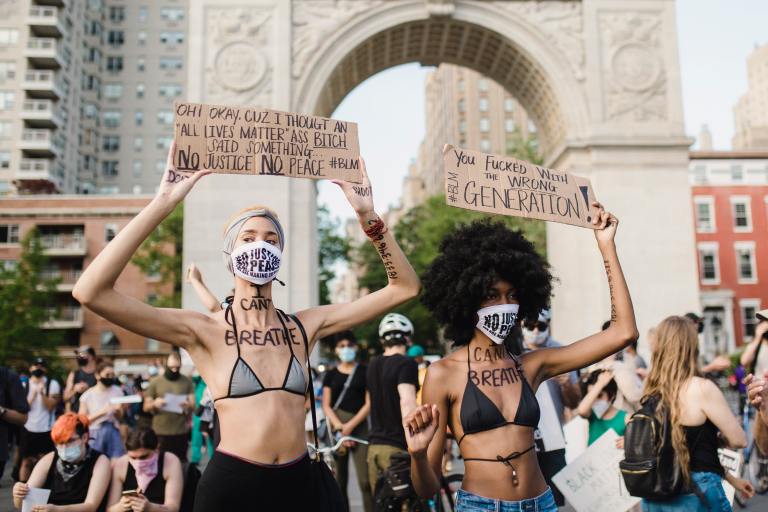Why Old, Dead White Men Still Matter
Well, I hate to break it to you, but old and/or dead white men still matter, and this is why: they matter in the way that their works speak to the development of constructs regarding race and racism.

I have heard it asked in the classrooms of my childhood. I have heard it asked in the halls of my college. I have heard it asked on the subway to work, in bars during happy hour, in my own classroom. I have heard it, and it is this: “Why the hell do old (and/or dead) white men still matter?”
I have thoroughly pursued an answer to this question, attempting to wayside my own predilections of the literature of white men that I so deeply admire, entering dialogues with students clad in skinny jeans and non-optical Ray-Bans with copies of On the Road and Fear and Loathing in Las Vegas tucked securely in their armpits, suppressing the urge to point out that Jack Kerouac and Hunter S. Thompson are, in fact, old and/or dead white men too. But no, apparently: there is only one category of old, dead white men who have become outmoded and irrelevant, the kind that appears in tin-types, the kind whose sentences are not quick and to-the-point, the kind that appear on the A.P. English Top Forty list.
Well, I hate to break it to you, but old and/or dead white men still matter, and this is why: they matter in the way that their works speak to the development of constructs regarding race and racism.
In the case of American literature, one must first examine the purpose of the literary canon. Although American literature is relatively new, it derives from the European tradition. As a country in the 19th century trying to harness its bearings on a cultural level, with only a handful of jeremiads and polemic religious documentation to its name, the prerogative of Hawthorne, Emerson, and the rest of the bunch was to carve out an identity with the deliberate astuteness of a stonemason who eases out the shape of a brick from raw limestone. After all, the purpose of “the canon” in the first place is to eke out a national identity. Hawthorne did this by illustrating the horrific underbelly of the Puritanical manifest with the aid of inherited familial guilt. Thoreau did this by cashing in on the mythos of the virgin land ethic. Melville did this with water and whales (I’ll come back to this later). Poe did this with detectives and drugs and ravens (oh my!). It still begs many a question. For instance, where is race in all of this? Where is the antebellum American economy in all of this? Where is the blood of the victims of the slave trade? Has it seeped into the American soil of these stories? Is it merely fertilizer to these canon-makers, and nothing more? And if this is the case, why are these men still relevant?
Toni Morrison has a compelling perspective on this. In her critical book Playing in the Dark: Whiteness and the Literary Imagination, she proposes a reading with an “Africanist presence,” a term she coins in reference to not only the depiction of racialized archetypes within the American canon, but the absence of any sort of presence as well. Here’s an example as applied to pop-culture and an old, not-dead white man, courtesy of a graduate professor of mine (thanks, Professor Moustafa Bayoumi!): Woody Allen’s most recent movie, Midnight in Paris.
As is standard in Allen’s filmography, the protagonist of Midnight in Paris, Gil Pender (Owen Wilson) comes from an assumingly white (or Jewish) upper- or upper-middle class background, a member of the American intelligentsia. Throughout the course of the movie, he travels back in time to 1920’s Paris, glorified by types like Hemingway (A Moveable Feast), Fitzgerald, and the rest of the rag-tag ex-pats. The only woman of color to appear in Allen’s movie is the dancer Josephine Baker (Sonia Rolland). Her part is minimal — if not a downright, fleeting cameo — and her depiction is sexualized. Looking over the obvious in this particular portrayal (the orientalist gaze, the male gaze, and so forth), what does it say about Allen using Baker as the only example of a character who is not white? Where are the other, non-white members of the Left Bank, the patrons, or the jazz-men of the cafes, or the African-French citizens themselves? (And notice how I jumped to “jazz-men”? What does that say about my relationship with the Africanist perspective? And where is Sidney Bechet, whilst his tune plays throughout the movie?) And if we’re looking at Woody Allen films in general, let’s talk about movies like Annie Hall and Manhattan. As much as I love those movies, I will ask the obvious: why is Woody Allen’s New York an all-white New York? The questions concerning these topics are not meant to reflect or accuse Allen of racism within his fictive world; rather, they are meant to illicit discussion of cultural context, what part this cultural presence might play in the creation of a narrative, and how this speaks to the national context. To evoke Morrison:
“…in matters of race, silence and evasion have historically ruled literary discourse. […] To enforce its invisibility through silence is to allow the black body a shadowless participation in the dominant cultural body.”
Let’s bring it back to an arbiter of our nation’s literature: Herman Melville. To put it quite simply, Melville is my main man. Melville was also one of those dead white men who cared deeply about the situation of slavery and rampant imperialism in the United States — just read “Benito Cereno,” an inverted take on slave mutiny originally published in the abolitionist journal Putnam’s, or the parable “The Bell Tower.” The reasons to read the works of Melville if one is on the prowl for a dialogic engagement on racism are apparent in this case. But what about sub-text?
(Note: the following example is a part of my graduate thesis. If any readers decide to apply it to their own college papers or what have you, I will hunt you down and shank you. And by “shank you,” I mean your professor will weed you out with aid of SafeAssign, and I will request a hearing with the MLA. Duly noted? Okay.)
In Melville’s opus Moby-Dick, we’re presented with a post-colonial ur-text, filled with many a sign and symbol indicative of racial conflict in Melville’s contemporary America. The most obvious one is the titular whale himself; as Michael Berthold expounds in his essay “Moby-Dick and the American Slave Narrative,” whales were used in basic abolitionist iconography, invoking a “prophesized eradication” of the plantation industry and the treatment of slaves. In Moby-Dick, this white whale exists underneath the water, so perhaps we can argue that the world above the water and the world below the water represent a master-narrative/counter-narrative dichotomy when applied to the romantic, white-washed, manifest-destiny-loving, mythic spin of U.S. history. To (literally) illustrate:
Master-narrative
——————————————-
Counter-narrative
Ah, but what about the boat the action takes place on, the Pequod? The Pequod with its multi-racial crew, filled with white Ishmaels and Ahabs. Pacific Islander Queequegs, and black Pips? The boat that rests both on the water and slightly below?
Narrative
———(I’M ON A BOAT!)———–
Counter-narrative
From the graphic visual above, you can see that the boat creates a potential space, one that is used as a tool of subversion and inversion while engaging in a muted discourse on an Africanist presence. We have non-white Queequeg, described as a man with the profile of George Washington (a scandalous thing to compare in Melville’s day); we have the white character of Flask sitting on the shoulders of “his” harpooner, the black Daggoo (symbolic of antebellum economy); we have Pip, who after jumping overboard and witnessing the “colossal orbs” of an indifferent God in the water, emerges speaking in tongues (a spin on the stereotype of “babbling savages” — see: Joseph Conrad’s Heart of Darkness — made here to paint him as a character filled with portent). So it seems that Melville — an old, dead white man — has no true answers (as the apocalyptic ending of the book can attest to), but knows enough to present candid facts through an artistic medium, and to make them, all in all, a catalogue of injustice within the canon.
Of course, some can shrug off Moby-Dick, Benito Cereno, and “The Bell Tower” as artifacts from an American antiquity. However, doing so would be like solely dismissing Ralph Ellison’s Invisible Man as an outdated critique of Marxism. Both novels are not protest novels, but the way in which they speak to matters relating to the subject of race cannot be tarnished by age – indeed, they seem to forbid us to do so.
This, of course, is not to say that old and/or dead white men are the only canon-contributors who matter — far from it. But there is a necessity in entering these old white men into a conversation with texts that not only speak to their respective generations, but ours as well. Some of us like to think that we live in a post-racial society, but our own current events — the Tea Party and the occurrences surrounding the death of Trayvon Martin — speak against this. By educating ourselves in the cultural paradigms of our past and the presence of race (or lack thereof) within them, we can begin to fully realize the trajectory of our own prejudices, and find ways to someday remedy them. Art, after all, is an imitation of life. ![]()




